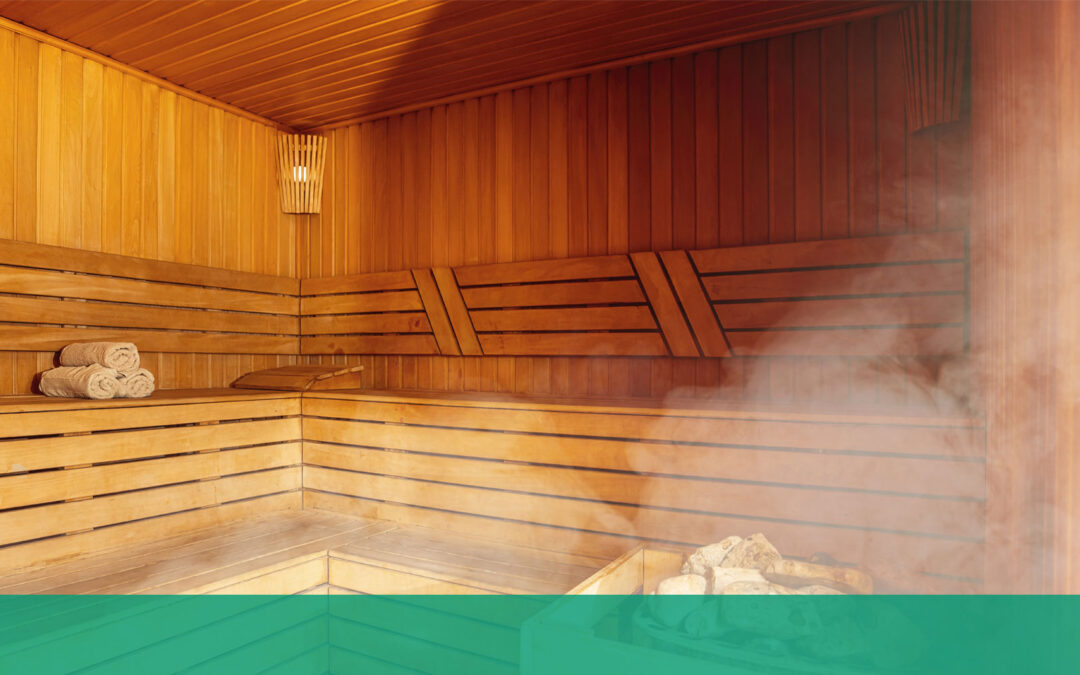Finland is said to be the birthplace of saunas. Reports state that there are 3.3 million saunas in Finland for a population of approximately 5.5 million people. Evidently, sauna bathing is part of the culture. The Finns call it the poor man’s pharmacy.
Sauna bathing is not limited to Finland, of course. Distant lands such as Japan, Turkey, and India have used saunas for centuries. The ancient Greeks enjoyed steam baths, and Native Americans also had their forms of sweating huts. But when sitting in temperatures that can exceed 150º F, one may wonder if sauna bathing is a form of torture rather than relaxation! So, is sauna bathing actually as good as it’s hyped up to be?
Cardiovascular Health
The rates of sudden cardiac death and frequency of sauna time were assessed in 2,315 middle-aged men (42 to 60 years old) from eastern Finland, and in the 21 years of follow up, the researcher observed that the risk of sudden cardiac death was 22 percent lower in those who sauna bathed two to three times per week, and 63 percent lower in those who took saunas four to seven times per week. Cardiovascular disease death was 27 percent lower in those who took saunas two to three times weekly, versus 50 percent lower for men who were in the sauna four to seven times a week. This was in comparison with men who entered the sauna just once a week.
For all-cause mortality, sauna bathing two to three times per week was associated with a 24 percent lower risk, and four to seven times per week with a 40 percent reduction in risk, compared to only one sauna session per week. Not only did the frequency matter, but the duration mattered, as well. Men who spent 19 or more minutes in the sauna had a 52 percent reduced risk of sudden cardiac death, whereas those who spent 11 to 19 minutes in the sauna experienced only a seven percent lower risk.1
An association between sauna bathing and reduced blood pressure has also been observed.2 As body temperature rises, blood vessels dilate, encouraging improved blood flow and circulation within the body.
Dementia
Another Finnish study followed 3,994 healthy men and women aged 30 to 69 for 39 years. The study took into consideration confounding factors affecting dementia risk, such as their lifestyles, and a significant reduction in dementia was observed in those who spent time in the sauna nine to twelve times a month.3 Heat treatments, as in sauna bathing, increase the brain fertilizer called BDNF (brain-derived neurotrophic factor). BDNF stimulates the growth of new brain cells and is associated with improved learning, comprehension, and memory.
Depression
Heat therapy has also been found to improve major depression.4 Heat treatment has been observed to increase the body’s production of beta-endorphins and dynorphins in the brain—chemicals that promote improved mood and well-being.
Detox
Sweating in the sauna has been found to be effective in supporting the elimination of measurable heavy metals in the sweat.5
Viruses
Viruses, like coronaviruses, “are most active in cool dry conditions” and are sensitive to heat. Temperatures of 130–150° F (55–65°C) for 15 to 30 minutes are reported to deactivate a range of enveloped viruses, including coronaviruses.6
There are multiple ways that sauna bathing benefits us. I find it fascinating that short term physiological stress from heat, rather than lukewarm temperatures, actually fortifies the body, strengthening and sharpening it to defend itself. When considering sauna bathing, get cleared by your doctor. Start low and slow to gradually become heat adapted. Stay well-hydrated, and consider that your body is also excreting sodium and some minerals while sweating, and those will need to be replenished. Exercise caution in immediately going from such hot temperatures to, say cold plunges. Giving yourself at least a few minutes before the next temperature adventure may be the best way to avoid hypotension.
- The JAMA Network Journals. “Sauna use associated with reduced risk of cardiac, all-cause mortality.” ScienceDaily.
- Mayo Clinic Proceedings. “Cardiovascular and other health benefits of sauna bathing: A review of the evidence.”
- National Library of Medicine. “Association of plasma cytokines and antidepressant response following mid-intensity whole-body hyperthermia in major depressive disorder.” PubMed.
- National Library of Medicine. “Blood, urine, and sweat (BUS) study: monitoring and elimination of bioaccumulated toxic elements.” PubMed.
- National Library of Medicine. “Turning up the heat on COVID-19: heat as a therapeutic intervention.” PubMed.


